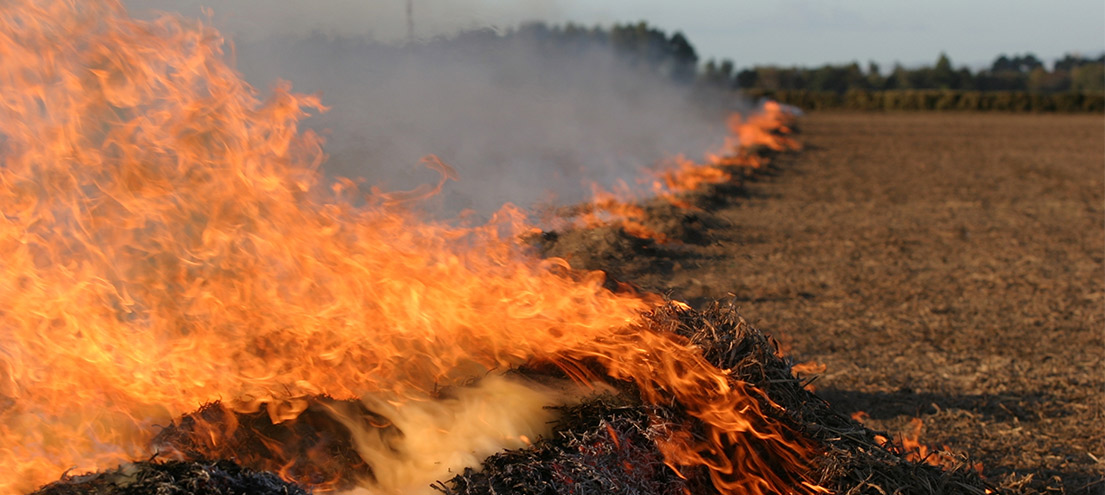
Reducing trouble from stubble burning
It’s around this time of year that you may start to notice smoke from stubble burning in rural areas. Zone Lead Brian Reeves reminds us about the things we should do before lighting up to ensure better and safer outcomes for all.

Brian Reeves, Zone Delivery Lead
Last year more than 850 smoke-related complaints were lodged with us. The year before that, it was nearly 900.
At around $350 per callout, the cost to the ratepayer can really add up. We want to get this number down.
Many of these complaints relate to people burning rubbish and waste material outdoors, but we also get plenty relating to stubble burning.
It’s often urban people making the call. Many don’t understand that stubble burning is a legitimate and effective way of dealing with crop residue and controlling weeds.
Having said that, the fact remains that smoke and ash from stubble burning can be a real nuisance and negatively affect the lives of neighbours and even those living many kilometres away.
The problem
The smoke can cause respiratory issues for residents, pets and livestock; force households, schools and parties indoors; and reduce visibility on the roads. The fire itself can endanger life and property if not properly managed.
While stubble burning is a recognised option for dealing with crop residue, there are still some things that farmers can and should do before lighting up to ensure better and safer outcomes for all.
Check it's alright
First and foremost, you should check that it is alright to light. This is crucial.
Fire and Emergency New Zealand has a Check It’s Alright website. There you will find a fantastic tool where you enter the type of burn you want to do, the specific day and your address.
The tool then gives you a risk profile based on things such as wind speed, temperature, and the fire danger index.
Fire and Emergency New Zealand also provides an excellent guide for stubble burning, covering things such as weather, firebreaks, the right way to light, and insurance. I strongly recommend that you look at it.
Smoke management plan
Before lighting up, it’s a requirement to have a smoke management plan, which the person controlling the fire must have on them at the time.
The plan covers things such as the material being burnt, the expected forecast, the location of the burn, and how any negative effects will be mitigated.
Consider the weather conditions
Weather plays a big part in determining how much of a nuisance smoke can be. So, it’s important to choose the right conditions.
Cloudy days are some of the best for stubble burning. They come with light and unstable winds that are good for dispersing and limiting the spread of smoke.
Cool or foggy air is generally bad for burning. The smoke sinks and won’t disperse.
Conversely, if the wind is swaying trees or blowing toward residential properties, you shouldn’t light up.
Air quality rules
Please be aware of the rules in the Canterbury Air Regional Plan (CARP), especially schedule 7 of the plan and the resource consent requirements for burning in buffer zones around some Canterbury towns.
Taking your time to get your stubble burning right reduces nuisance smoke and the number of callouts that we need to attend, and protects life and property.
If you have any questions or concerns, or any doubts whatsoever about planning your burn, please call us on 0800 324 636.
Find out more about outdoor burning rules.
